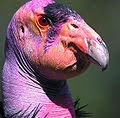-------------------------------------------------------------------------
In case any reader out there can, by chance, flesh this story out any further....
Responding to yesterday's post, a reader initially emailed me a story I'd never heard before about wildlife biologist Herbert Stoddard (who had several well-known IBWO encounters in Georgia through the 50's):
"Your story today on Dr. Terres brought to mind some mention about Herbert Stoddard’s statement, near his death, that he knew of an IBWO nest but had never revealed it for the sake of the birds. I cannot locate this passage in the several books I have on the subject. I am not confusing it with his pretty well known sightings that are often listed as credible accounts, but maybe I am just wrong. Have you ever read about this?"
A few hours later the same emailer had sorted out this additional info:
"...I just ran across the reference, and I will clear up my somewhat inaccurate memory. In Peter Matthiessen's Wildlife In America, 1959, he states '...though Herbert Stoddard, the quail authority, is said to know of a last pair or two somewhere not far from his home in Thomasville, Georgia. For obvious reasons, not excluding an invasion of well-intentioned naturalists, Stoddard will not disclose its whereabouts; quite possibly he is the only man who will ever hear again the ivory-bills loud, wild cry...'
Unless I did in fact read something else printed after his death in 1970, this may be the only reference I based my memory on..."
I've never read Stoddard's memoirs, "Memoirs of a Naturalist," which were published in 1969, a year before his death, so don't know if they add any further clarification to this. If any reader knows more about the story (and can cite a source or give your credentials) please let us know, although I'm doubtful that Stoddard ever specifically claimed to know the location of a nest... but, would love to learn something new! (it is known that he believed he knew areas where the birds were present).
(Email me privately if you don't wish to be involved in the 'comments' section.)
--------------------------------------------------------------------------
 http://tinyurl.com/2akr497
http://tinyurl.com/2akr497





